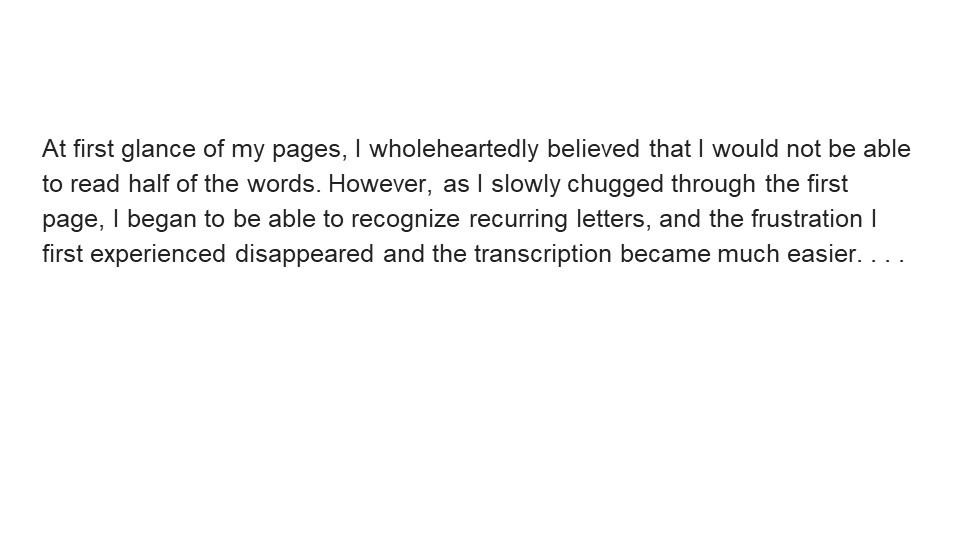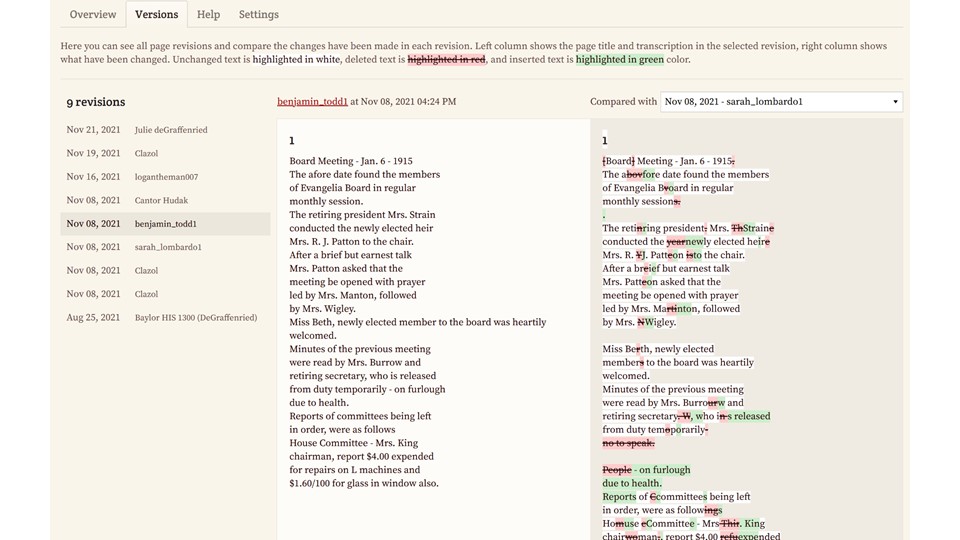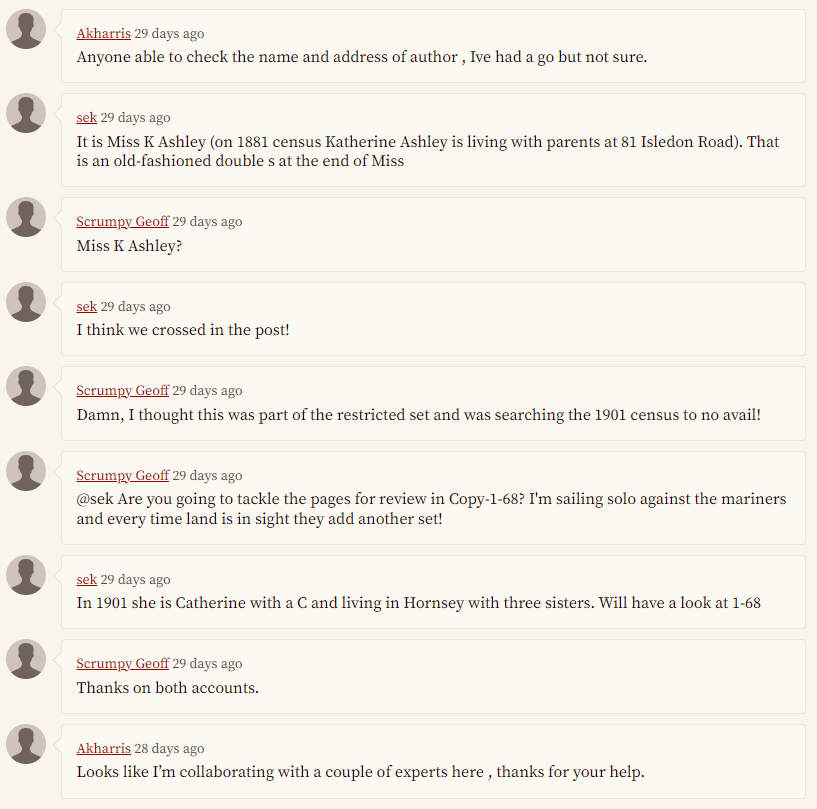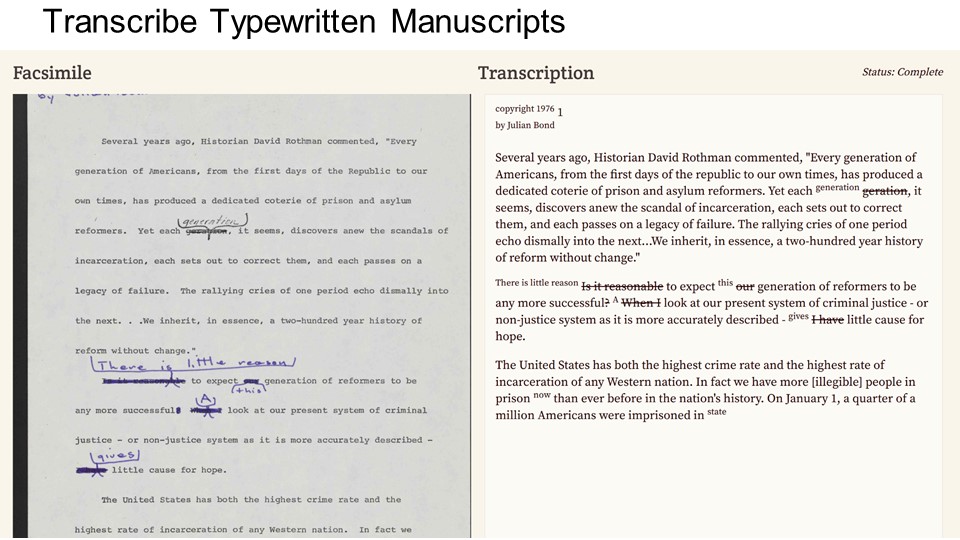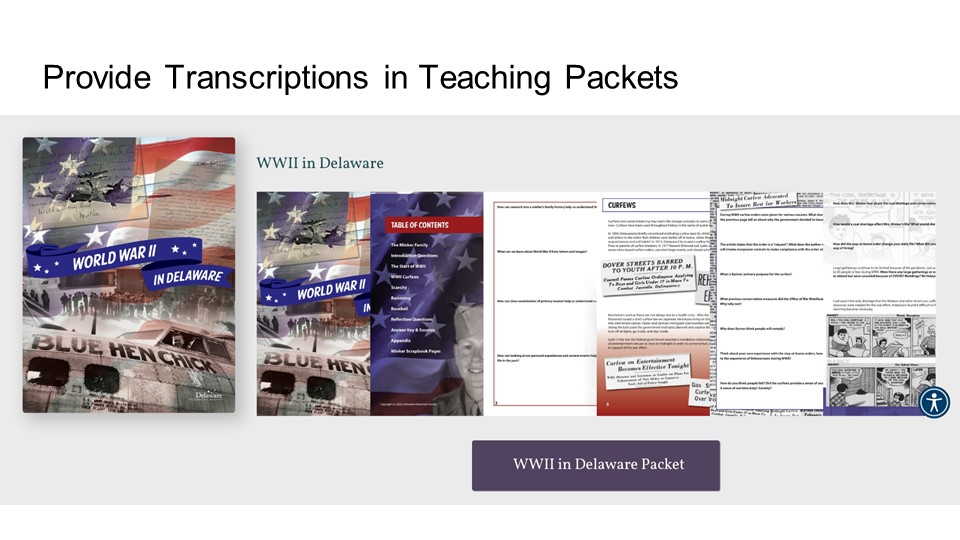One of the common complaints I hear is that young volunteers or students can’t read cursive. While it’s true that many students are not taught cursive as part of their school curriculum, that isn't an insurmountable barrier to participating in a transcription project. The medieval and early modern transcription projects on FromThePage are written in scripts that no one uses now, but they have been successful. As someone who has participated in transcribathons deciphering extremely hard to read hands, it's challenging, but extremely satisfying -- like working out a puzzle. In addition to a sense of accomplishment I’ve also learned a new skill.
Our top four recommendations when your transcribers can’t read cursive:
Don’t underestimate them!
This quote is from a student in a freshman history class at Baylor University -- arguably the youngest and least cursive-exposed students on campus. The harder it is, the more motivation and help they’ll need, but everyone who currently reads cursive started out not knowing how. Working through discomfort indicates you’re working at the edge of your abilities and actually learning!
Collaborate!
Transcribathons are a great way to get any group of volunteers “over the hump” of a new task, but transcribing together works in a classroom too. Start by having someone “in authority” stand at the front of the room and start working on a page in public. The Missouri State Archivist, John Dougan, does this -- and he’s terrible at it -- so their transcribers can’t help but correct his mistakes. Having the professor or archivist working with a classroom make mistakes in public also models the need for collaboration. And it’s a great way to get everyone on the same page – that “this kind of document is formatted a particular way”, or that “this letter-writer forgets to cross their T’s and uses a pound sign for an ampersand.”
Pairing two folks up works well, too. The obvious configuration is two students in a class or two volunteers, but pairing a retiree who can read cursive with a teenager who is more comfortable with technology is a neat way to build cross-generational relationships and appreciate both their skills. Anytime you have someone else to work with takes the pressure off.
Encourage using & responding to the “Notes & Questions” field in FromThePage; that’s where folks who are working remotely and independently can leave notes and questions and respond to others. It makes the work less isolating and builds relationships.
Transcribe More Recent Documents
The Baylor history class was working with cursive texts from the 1910s. University of Virginia runs a transcribathon of the papers of civil rights leader Julian Bond -- whose documents are typewritten! The further back you go (Early Modern? Medieval?) the harder the handwriting may be to decipher. Plenty of state archives run projects with government forms -- immigration forms, marriage certificates, tax records -- that are easier to read. After folks have positive experiences with easier material, you can graduate them to more challenging projects.
Provide Training Material
This one is a bit of a no-brainer, but more training is great. There’s a lot available for pre-1800 material, like this paleography course from the UK National Archives, but less for 1800 to the modern era. I think as young people get less cursive instruction in school we’ll need some modern paleography resources.
Want to take your educational materials to the next level? Get your live demo with Ben and Sara.

